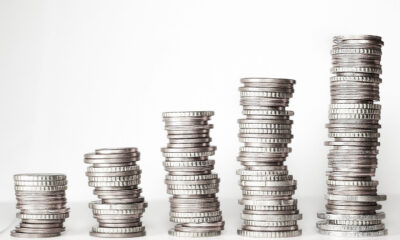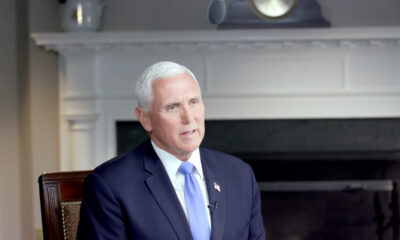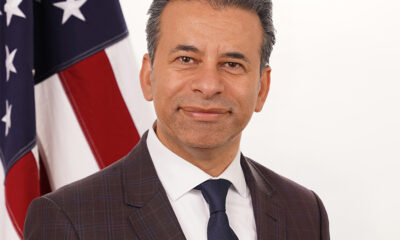Executive
The Real Economy
Reviewing The Myth of American Inequality, showing that the real American economy bears no relation to popular narratives about inequality.

The following review is part of RealClear Books & Culture’s symposium on The Myth of American Inequality.
Suppose inequality is not real?
Public opinion about inequality in the United States is closely intertwined with perception about the distribution of income. According to a 2020 Pew survey, 61% of respondents believe that there is too much inequality in the United States. Among those who share this belief, 60% favor increasing taxes on the wealthy while half support entitlement expansions such as universal healthcare. These data reinforce earlier surveys that show rising perceptions of conflict between the wealthy and the rest of American society, as symbolized by the “Occupy Wall Street” movement of the early 2010s. Younger voters in particular have stronger perceptions of a widening class divide, as well as a tendency to see government intervention into the economy in a more positive light. A 2022 survey revealed that positive impressions of socialism among 18–29-year-olds (40%) reached near parity with positive impressions of capitalism (44%).
These data demonstrate that popular narratives about rising inequality drive political support for corrective government action. But what if inequality is not rising after all, and the popular narratives are little more than a political myth? This is the implication of Phil Gramm, Robert Ekelund, and John Early’s book The Myth of American Inequality.
Statistics measure gross income, not income net of taxes
Gramm and his coauthors counter with a simple observation about the way that income distributions are measured in the United States. Official statistics from the Census Bureau estimate earnings by income quintiles, with the top 20% appearing to outpace all other income groups in the last several decades. These data do not reflect economic reality though, as they measure total earnings before accounting for taxes. Since the wealthiest earners also shoulder the lion’s share of the federal income tax burden, their actual take-home income is substantially lower than the unadjusted Census Bureau figures.
A second complication affects statistics on the lower end of the income distribution where a suite of generous entitlement programs, collectively referred to as “transfer payments” in national accounting terminology, aim to offset poverty. These, too, are excluded from the census measures. Together, these omissions create a picture of inequality that is at odds with the actual take-home income of both groups.
When Gramm et al adjust the figures to include taxes and transfers, the alleged rise in inequality all but dissipates. Before adjustment, the census figures show the ratio between the top and bottom 20% of earners rising from 13.7 to 1 in 1947 to 16.7 to 1 in 2017. Once taxes and transfers are added, this trend flattens out. Gramm and his coauthors report a corrected ratio of just 4 to 1 in 2017, which is actually down slightly from its position 70 years prior.
Failure to measure effects of policies already in force
The corrected numbers carry substantial repercussions for prescriptive policy debates. Inequality activists routinely invoke pre-tax and pre-transfer figures to justify their calls for aggressive tax hikes and additional redistributive programs. In reality, the federal income tax system we have is already extremely progressive, while existing transfer programs and tax credits for the poor already achieve the levelling effects that inequality activists claim they desire. By implication, the case for tax hikes, new “wealth taxes,” and additional spending on new entitlement programs is rendered moot by a simple statistical correction.
Unfortunately, the public debate around inequality remains cluttered with misleading statistics and activist academics who traffic in distorted data. Separate from the census figures, economists Thomas Piketty, Emmanual Saez, and Gabriel Zucman (hereafter referred to as PSZ) have made careers by publishing estimates of the wealthiest 1% of income earners. According to their own measures, the top 1% income share almost doubled over the last four decades, growing from 10% in 1980 to almost 19% in 2020. PSZ depict this rise in income concentration as a direct repercussion of the Reagan era tax cuts, which lowered the top marginal rates on the wealthy while also closing several loopholes in the tax code. Over the last decade PSZ have weaponized their statistics for political advocacy by championing wealth tax proposals such as those favored by Sen. Elizabeth Warren and, more recently, the Biden White House.
Post-tax and post-transfer income at the high end has remained flat
The PSZ trio pushes their data claims even further by turning to tax rates. In a widely-disseminated opinion article for the New York Times, Zucman claimed that the wealthiest earners actually pay an average overall tax rate of just 23%, which allegedly puts them slightly below their estimated rate of 24% for earners near the bottom of the income ladder.
The PSZ statistics have serious unaddressed problems, and more than a few signs that the three economists are placing their thumbs on the statistical scale to build a political narrative for higher taxes. Like the Census Bureau measure, PSZ’s main figure only reports pre-tax and pre-transfer income. A recent paper by economists Gerald Auten and David Splinter rectifies this issue, while also making corrections to other dubious imputations in the PSZ calculations. After accounting for taxes and transfers, Auten and Splinter show that the top 1% income share has barely changed since the beginning of their measurements in the early 1960s, hovering at a stable 8-9%. My own work with Vincent Geloso extends these data back to the early 20th century. When we link our series to the post-1960s data, we find that the post-tax and post-transfer income share of the top 1% has essentially remained flat since World War II.
Inequality activists mislead on tax rates and benefits
Turning to tax rates, we find further evidence that the inequality activists have misled the public. Recall Zucman’s widely-trumpeted claim that the wealthiest earners pay a lower effective tax rate than most working Americans. Closer inspection reveals that Zucman manipulates his measurements in two significant ways.
First, he intentionally excludes tax benefits for the poor such as the Earned Income Tax Credit. An accurate accounting of these poverty-alleviating credits shows that the lowest quintile of earners pays an average tax rate of just 13%, mostly in state and local taxes. This figure is a full 10 percentage points lower than the tax rate that Zucman reported to the New York Times. Second, Zucman artificially suppresses the actual tax rate paid by the top earners by adopting unrealistic and untested assumptions for allocating the incidence of corporate taxes.
PSZ accidentally revealed this manipulation in an earlier published data set, which allocated corporate taxes in line with the mainstream economic literature. According to these data, the top 0.001% of earners face an overall effective tax rate of about 40%, or almost twice the distorted rate that Zucman claimed in the New York Times. Even more revealing, the overall tax rate on top income earners today is down just slightly from the 1960s, when this same group faced an average rate of about 45%.
Disconnect from reality
So what explains these glaring discrepancies in the data? Simply stated, inequality activists have constructed their narrative around statistics that are fundamentally disconnected from economic reality. They create an impression of skyrocketing inequality through mismeasurement. By omitting the effects of taxes and transfer payments, they paint a picture of an America that nobody actually experiences. They exaggerate the income earnings of the wealthy, and understate the benefits received by the poor.
Gramm and his co-authors have provided a necessary corrective to these misleading statistical claims, but it’s also just the start of a larger call to interrogate the popular narrative about rising inequality. If that narrative rests on a statistical illusion, then so does the entire case for wealth taxation.
Samuel Gregg’s contribution to the symposium: Dispelling Illusions About American Inequality | RealClearBooks
James Piereson’s contribution to the symposium: The Inequality Hoax | RealClearBooks
This article was originally published by RealClearBooks Symposium and made available via RealClearWire.
Phillip W. Magness is the David J. Theroux Chair in Political Economy at the Independent Institute.
-

 Civilization3 days ago
Civilization3 days agoDC Pipe Bomb Arrest Raises Questions About Christopher’s Wray’s FBI
-

 Civilization4 days ago
Civilization4 days agoThe Legal Logic Behind U.S. Operations Against Narco-Terrorist Networks
-

 Executive5 days ago
Executive5 days agoNewsom’s ‘National Model’ for Homeless Wracked by Fraud
-

 Executive4 days ago
Executive4 days agoWhen You’re in a Hole, Stop Digging
-

 Education3 days ago
Education3 days agoWaste of the Day: Taxpayers Subsidize Football Coach Severance
-

 Executive2 days ago
Executive2 days agoWaste of the Day: Obamacare Failed Test, Approved Fraudulent Subsidies
-

 Civilization2 days ago
Civilization2 days agoPence Calls on Trump To Fire RFK Jr Over Abortion Drug
-

 Executive4 days ago
Executive4 days agoWaste of the Day: Feds Pay Nonprofits That Sue the Government










